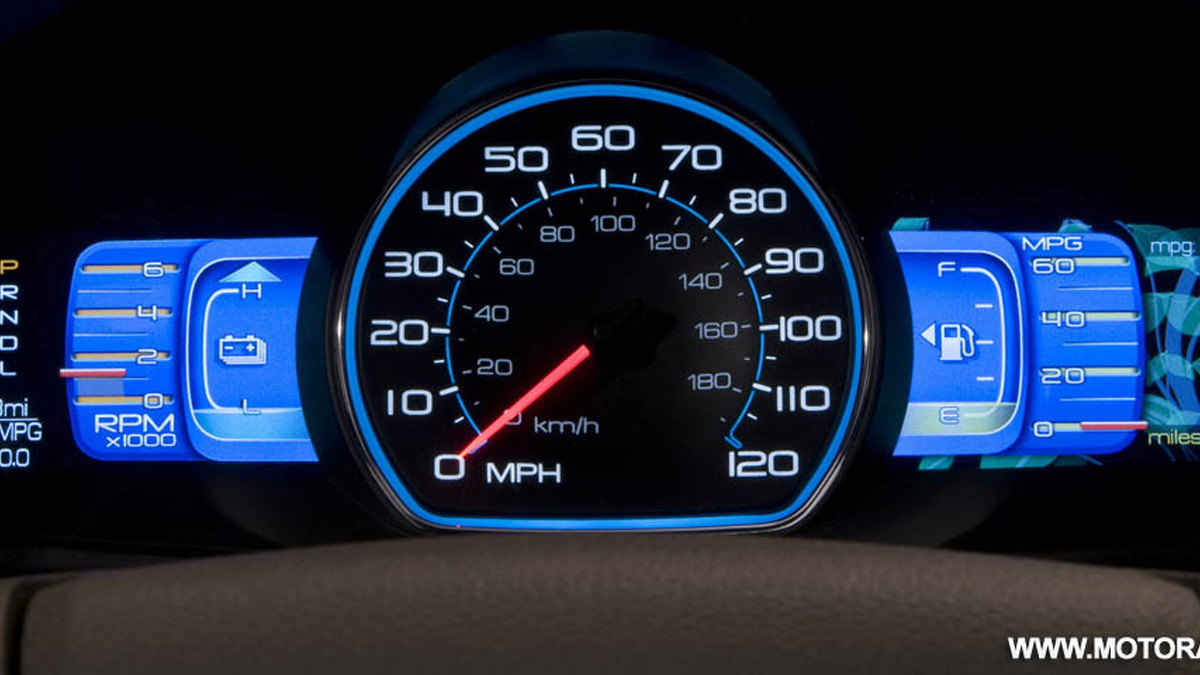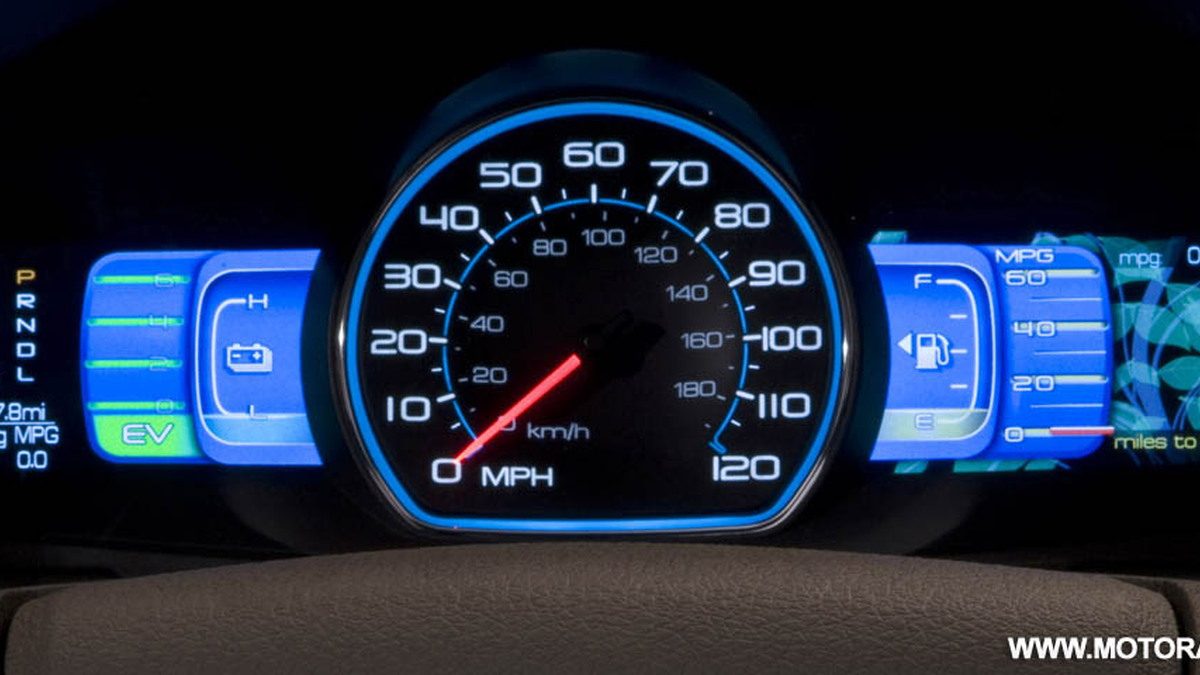“Offering consumers more fuel-efficient vehicle choices, including maximizing the efficiency of our gasoline-powered engines, improving and increasing our hybrid vehicle offerings and increasing our use of fuel saving technologies such as six-speed transmissions, is part of Ford’s plan to deliver technology solutions for affordable fuel economy for millions,” said Derrick Kuzak, Ford’s group vice president for Global Product Development.
Ford's hybrid versions of the Fusion and Milan will be the mark the debut of the company's next-generation hybrid system, designed to deliver at least 5mpg better performance than the Toyota Camry hybrid. Part of the system involves the SmartGauge technology detailed earlier today, but it also relies on more efficient combustion engines and improved electric drive as well.
The gasoline engines available will include a brand-new 2.5L four-cylinder Duratec good for 175hp (130kW), a reworked 3.0L V6 offering 19hp more than the last model, and a 3.5L V6 rated at 263hp (196kW) for the Fusion Sport. The four-cylinder engines are expected to deliver at least 3mpg better highway fuel economy than the Honda Accord, and 2mpg better than the Toyota Camry. Six-speed transmissions throughout the engine lineup yield up to 10% improvements in fuel economy.
Hybrids haven't been big at Ford, for the most part, despite some strong work on the Escape and its plug-in hybrid program. Moving into the mid-range sedan hybrid segment will help improve the volume sales and the accessibility of the technology, and to backup the new entry, Ford's implementing a brand new hybrid system that it hopes will make the Fusion and Milan the most efficient mid-size sedans in America. The primary benefits of the new system include longer duration and higher speeds in electric-only mode, with speeds up to 47mph (75km/h) possible - nearly double many hybrids' electric-only speeds. Total range on a tank of fuel is targeted to exceed 700mi (1,100km) as well, offering a huge travel radius and bi-weekly or rarer fill-ups for many commuters.
Some of the technology in the Fusion and Milan hybrid system is very interesting. The 2.4L four-cylinder engine that powers the combustion side of the process, for example, uses the Atkinson cycle. This method effectively trades some power density for greater overall efficiency by allowing some of the compression charge to escape back through the intake valve, effectively making the expansion stroke longer than the compression stroke. A wide-band air-to-fuel ratio sensor and computer algorithm continuously monitor the load and output of the engine, balancing the fuel delivered to the engine to maximize efficiency.
On the electric side, regenerative braking has been raised to 94% efficiency by using a system that actuates regenerative braking only, followed by actual braking during city driving. This is combined with a unique brake p actuation system that provides better brake pedal feel than previous systems, while still maximizing the systems effectiveness. Finally, a continuously variable transmission (CVT) joins the drivetrains together with a nearly infinite range of gear ratios to make sure the whole system is operating at peak efficiency as much of the time as possible.


